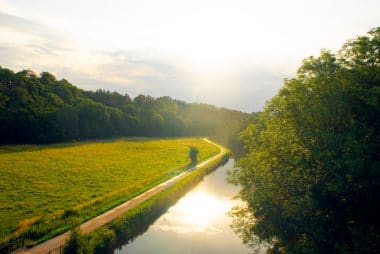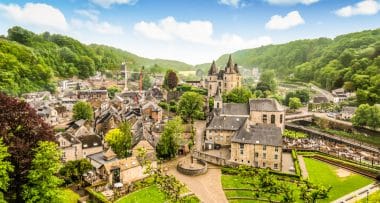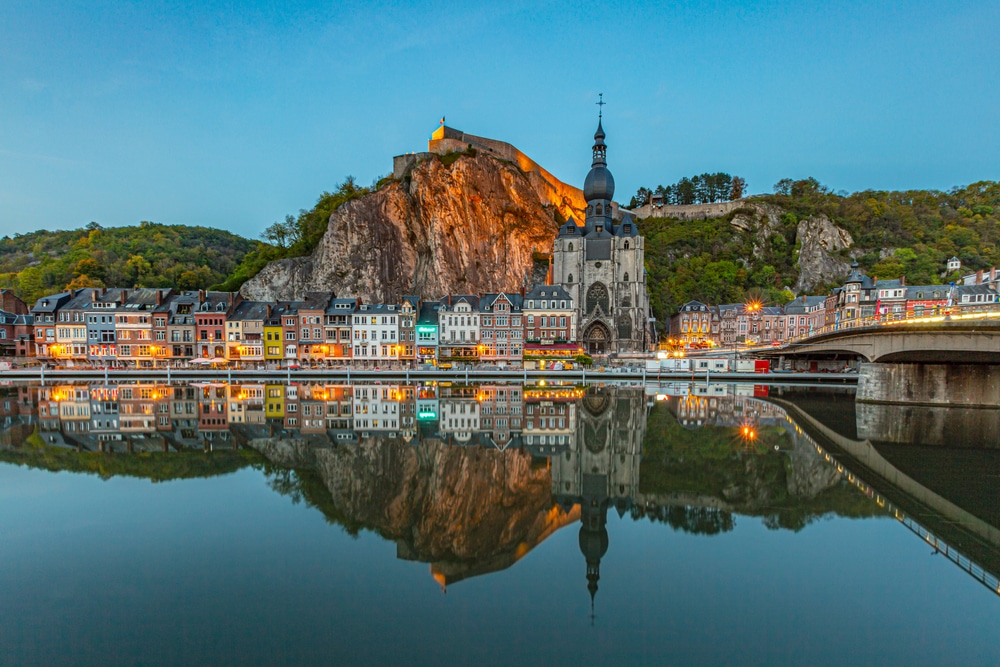Wallonia in the French-speaking south of Belgium is the largest region of the kingdom and is a multifaceted holiday destination. Tourists can get to know interesting historic towns, visit romantic villages and the historic castles and palaces of the Meuse Valley.
Highlights include the former coal mines in Hainaut as well as the many nature parks. Nature lovers and athletes are drawn to the extensive forests of the antennas, to the beautiful lake and river landscape and to the High Fens, the high plateau with its many moors.
Those who spend their holidays here can combine culture, tradition, nature, sports, city trips and excursions into the countryside! Wallonia invites you to an unforgettable journey of discovery of UNESCO sites worth seeing.
Province of Liège

The cultural centre of the Walloon region is home to the Grand Curtius Art Museum and the Archéforum. In addition to other interesting art museums, the cathedral’s treasury is one of the city’s most important sights.
The province of Liège not only inspires with Europe’s largest port, but also with the extensive low mountain regions. Nature lovers and athletes will find a wide range of leisure activities in the middle of nature, which is rounded off by the High Fens, the famous plateau with the impressive moor landscape.
Remembrance tourism
Those interested in history will get their money’s worth in this key region for commemorative tourism. Traces of the Battle of the Bulge, the First and Second World Wars include memorials, museums and cemeteries in La Roche, Bastogne, Arlon and Sankt-Vith. Other interesting cities are Stavelot, Huy and Malmedy.
A visit to the city of Waterloo, where the Battle of Waterloo changed European history, is a must.
Highlights for city travellers
Walloon cities have a lot to offer for those interested in culture.
The city of Namur delights with its famous citadel, while Dinant is the cradle of the saxophone. The city of Mons with its Grand Palace in the centre is worth a visit.
Cities steeped in history
Fans of the Middle Ages and the Renaissance should pay a visit to the cities of Rochefort, Marche-en-Famenne, Bouillo and La Roche-en-Ardenne. Saint-Hubert, Europe’s hunting and nature capital, attracts tourists from all over the world with its rich historical heritage, impressive abbey palace and beautiful basilica.
Castles and palaces
In the middle of the wonderful natural landscape of the Ardennes, beautiful castles, palaces and gardens invite you to visit. Among the most beautiful castles are Jehay, Beloeil, Modave, Freur and Seneffe, while the most worthwhile castles are Franchimont and Reinhardstein. Holidaymakers should not miss the water gardens of Annevoie, which were created more than 250 years ago.
Ardennes

Shaped by nature and history, the antennas in the south of Wallonia are the country’s green lungs. Romantic villages, forests, plateaus and wonderful river valleys guarantee a relaxing holiday.
The valley of the Ourthe is a real feast for the eyes with the river that makes its way past old abbeys and castles. The contrasting valley of the Semois, with its abruptly rising rocks and beautiful wooded slopes, is a paradise for nature lovers. The Ardennes offer numerous hiking trails through unspoilt forests and lonely valleys.
High Fens
This plateau offers numerous designated hiking routes on solid ground or wooden footbridges. Many hikers are drawn to the East Belgian long-distance hiking trail GR 56, which partly leads through the High Fens. Some of the most popular starting points for hikes include Botrange, Mont Rigi and Narague Michel.
Outdoor activities
Thanks to its vast forests and hills, lakes, rivers and caves, Wallonia is a paradise for outdoor enthusiasts. Hiking, biking, climbing, kayaking, sailing, swimming and playing golf are just some of the activities that make Wallonia so attractive for sports enthusiasts.
Cosmopolitanism
Wallonia is cosmopolitan and multicultural. The university town of Ottignies-Louvain-la-Neuve is an internationally important centre for science and culture with student flair.
Carnival and city festivals
The long history is reflected not only in the cities, but in the whole of Wallonia. Many places have made a name for themselves with their colorful carnivals. The most famous is the Binche Carnival with its Gille figures, i.e. men in bell costumes. Holidaymakers should not miss this cultural event, as the carnival was awarded by UNESCO in 2003.
In the southern Belgian region, a wide variety of traditional city festivals are celebrated, where parades are not uncommon. Absolute highlights are the parades in Mons and Ath with the dragons and giants.
Culinary arts and gastronomy
Wallonia has made a name for itself far beyond its borders with its unique cuisine and gastronomy. Holidaymakers can look forward to abbey cheese specialities and monastery beers. Of the nine Trappist beers in the world, three of them are brewed in this Belgian region.
Climate and ideal time to travel
The ideal time to travel is between June and August, as pleasant temperatures prevail in summer and little rainfall falls. The maximum average temperature in July is 22 degrees Celsius, while the temperature in January averages four degrees Celsius.
Wallonia is located in the temperate climate zone. The oceanic climate is mild and humid.
Journey
There are three airports in Wallonia. Holidaymakers can choose either the airport in Liège, Namur or Charleroi.


